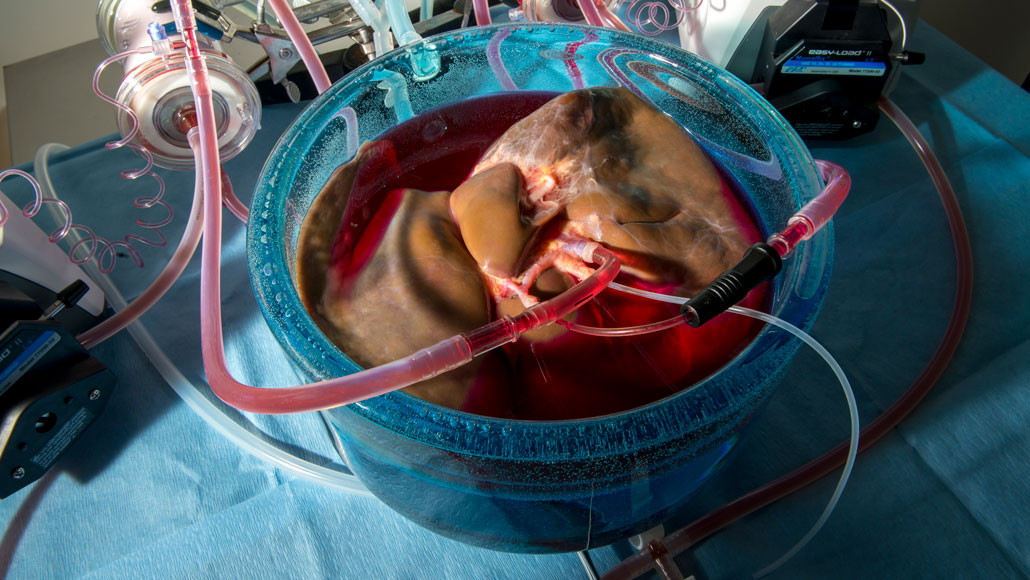
Treating human livers with protective chemicals (red liquid) before storing them at subzero temperatures kept the organs viable for over a full day outside the body — about three times as long as a liver’s normal preservation time on ice.
Jeffrey Andree, Reinier de Vries and Korkut Uygun